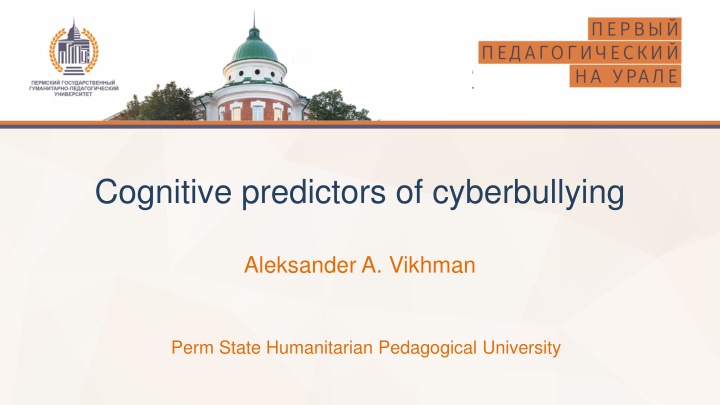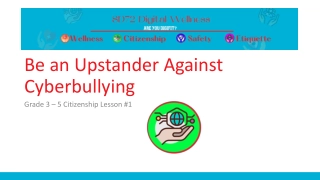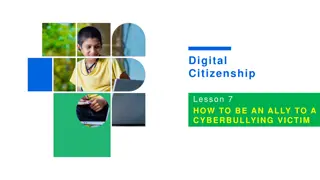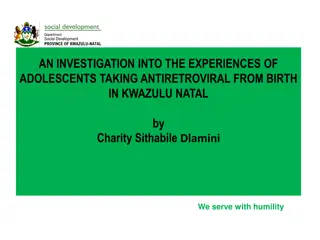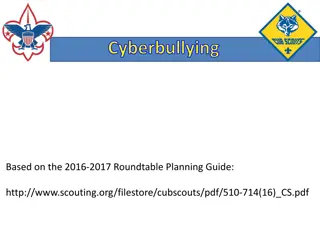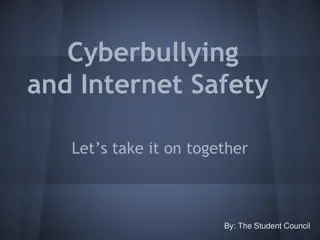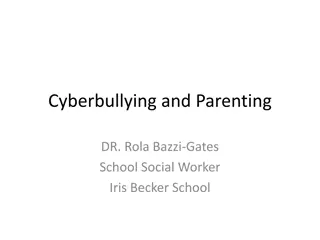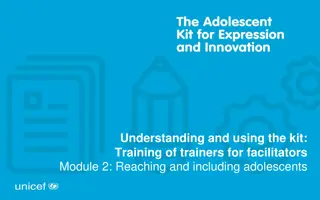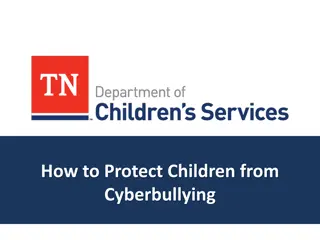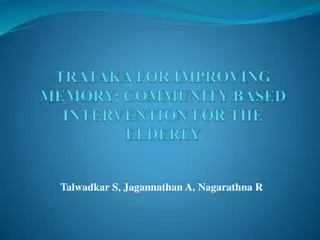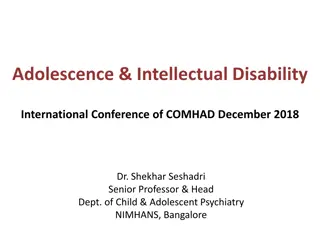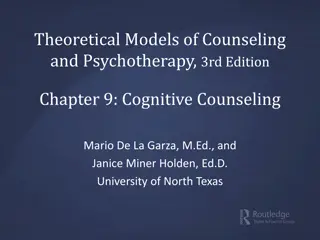Cognitive Predictors of Cyberbullying in Adolescents
Cyberbullying has become a concerning issue in the digital age, with studies exploring personality and cognitive predictors of cyber-victimization and cyber-bullying in adolescents. Research findings indicate correlations between personality traits such as conscientiousness, openness to new experiences, neuroticism, and extraversion, as well as cognitive aspects like intelligence and emotional quotient, with cyberbullying behaviors. Understanding these factors can help in addressing and preventing cyberbullying among adolescents.
Download Presentation

Please find below an Image/Link to download the presentation.
The content on the website is provided AS IS for your information and personal use only. It may not be sold, licensed, or shared on other websites without obtaining consent from the author.If you encounter any issues during the download, it is possible that the publisher has removed the file from their server.
You are allowed to download the files provided on this website for personal or commercial use, subject to the condition that they are used lawfully. All files are the property of their respective owners.
The content on the website is provided AS IS for your information and personal use only. It may not be sold, licensed, or shared on other websites without obtaining consent from the author.
E N D
Presentation Transcript
Cognitive predictors of cyberbullying Aleksander A. Vikhman Perm State Humanitarian Pedagogical University
Scientific Research 1. Personality Predictors of Cyber-Victimization and Cyber-Bullying in Adolescence Scientific Research 2. Cognitive basis of cyberbullying and computer addiction in adolescence. Scientific Research 3. Personality Features and Destructive Behavior of Students with Various Cyberbullying Experiences.
yberbullying Internet and modern electronic devices have transformed the traditional forms of communication, developed new ways and possibilities to socialize, while they gave birth to new types of negative interaction between people, including cyberbullying as a type of psychological abuse via the Internet technologies. C. Rey Yudes defines cyberbullying as hostile and intentional behavior associated with interpersonal violence repeated over time and manifested by communication technologies (chat or instant messaging, websites, online games, etc.) against peers who are unable to defend themselves. Cyberbullying methods could vary: sending insulting messages, public mailout of derogatory information (rumors, lies, intimate photos), hacking a victim s profile on a social network, intentional virus contamination of a victim s computer via software, etc.
Personality Predictors of Cyber-Victimization and Cyber-Bullying in Adolescence Empirical study was organized on a sample of 220 students of secondary specialized and higher educational institutions (age range from 17 to 22 years old, average age 18.3). There is a strong gender bias towards the female in the sample. Using the adapted Cyberbullying and Online Aggression Survey S. Hinduja, J.W. Patchin we measured indicators of cyber-victimization and cyber-aggression among students. To diagnose personality traits, the Russian-language version of the Big Five Inventory (BFI) questionnaire was used. As a result of step-by-step regression analysis, several reliable models of personality traits were built that predict cyber victimization and cyber aggression. Cyber-victimhood predicts declining conscientiousness ( = -0.197) and increasing openness to new experiences ( = 0.148) and neuroticism ( = 0.145). Cyberbullying predicts declining conscientiousness ( = -0.227), benevolence ( = -0.178), and increasing extraversion ( = 0.171).
Cognitive basis of cyberbullying and computer addiction in adolescence The sample included 105 teenagers aged 13-17 (SD = 1.22; 76% female) The following methods were used: Intelligence Structure Test (IST) by R. Amthauer, the Raven s Advanced Progressive Matrices Test, Chen Internet Addiction Scale (CIAS), the Hall s Emotional Quotient Test, Russian-language analogue of the questionnaire Cyberbullying and Online Aggression Survey (J.W.Patchin, S.Hinduja). Results. The study revealed negative correlations between indicators of problematic Internet use and characteristics of the cognitive sphere. There are differences in the severity of key symptoms of Internet addiction in adolescents with different levels of intelligence. Indicators of emotional intelligence are negatively correlated with almost all indicators of computer addiction, cyberaggression and cybervictimism. The results of the study indicate that reduced indicators of general and emotional intelligence create the basis for the formation of Internet addiction and increase the vulnerability of adolescents to manifestations of cyberbullying.
Personality Features and Destructive Behavior of Students with Various Cyberbullying Experiences The sample includes 216 students (with the average age of 18.3) from the facul-ties of humanities, mainly females (72%). Cyberbullying and Online Aggression Survey by S. Hinduja, J.W. Patchin was applied to measure students cybervic-timity, cyberaggression, and their combination. Big Five Inventory (BFI), K.V. Zlokazov s Test of social behavior strategies and Buss-Perry Aggression Ques- tionnaire (BPAQ-24) were used to diagnose personality features and destructive behavior. The results of the research show that 71.8% of the students were ex-posed to cyberbullying. Two categories were identified among students with some background of harassment on the Internet bully-victim (23.6%) and vic-tim (48.2%). It has been found that there are significant differences in behavior destructiveness and manifestation of some personality features (a low level of honesty and friendliness, being open to new experience, anger) among the surveyed grouped by their cyberbullying exposure and their role. It should be noted that the students in the category bully-victim (aggressive victim) reveal the most serious personality problems and the highest figures for the destructive behavior. The obtained results could be helpful in developing new strategies and methods aimed at preventing cyberbullying and preserving psychological wellbeing of the students with regard to a typical role in cyberbullying.
A group of cybervictimized school students with no cyberaggressive inclination occupies the most share: more than 48,2 %. The groups of bully victim and uninvolved have nearly the same shares (23.6% and 28.2% respectively).
